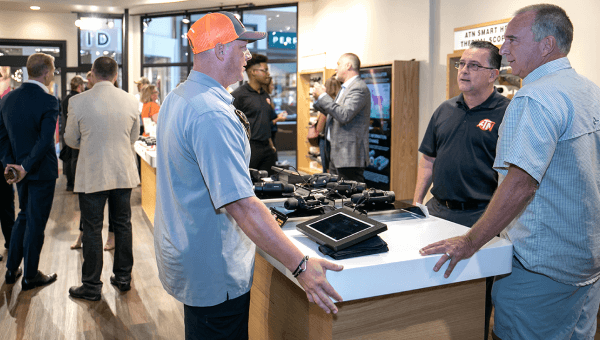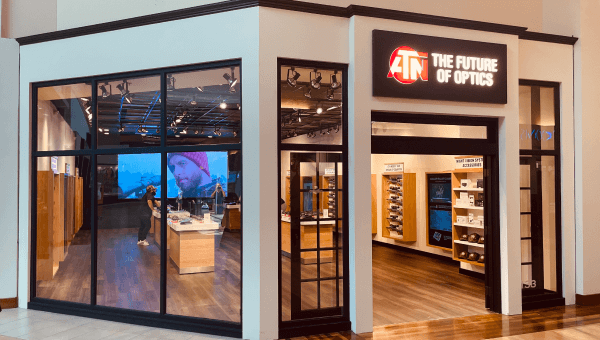Best thermal scope for coyote hunting
In the quest for the perfect coyote hunting experience, many hunters face the challenge of choosing the right gear. A key component of this gear is the scope. But not just any scope – a “thermal scope”. But why thermal? What advantages does it offer for coyote hunting? And which thermal scope is the best choice?
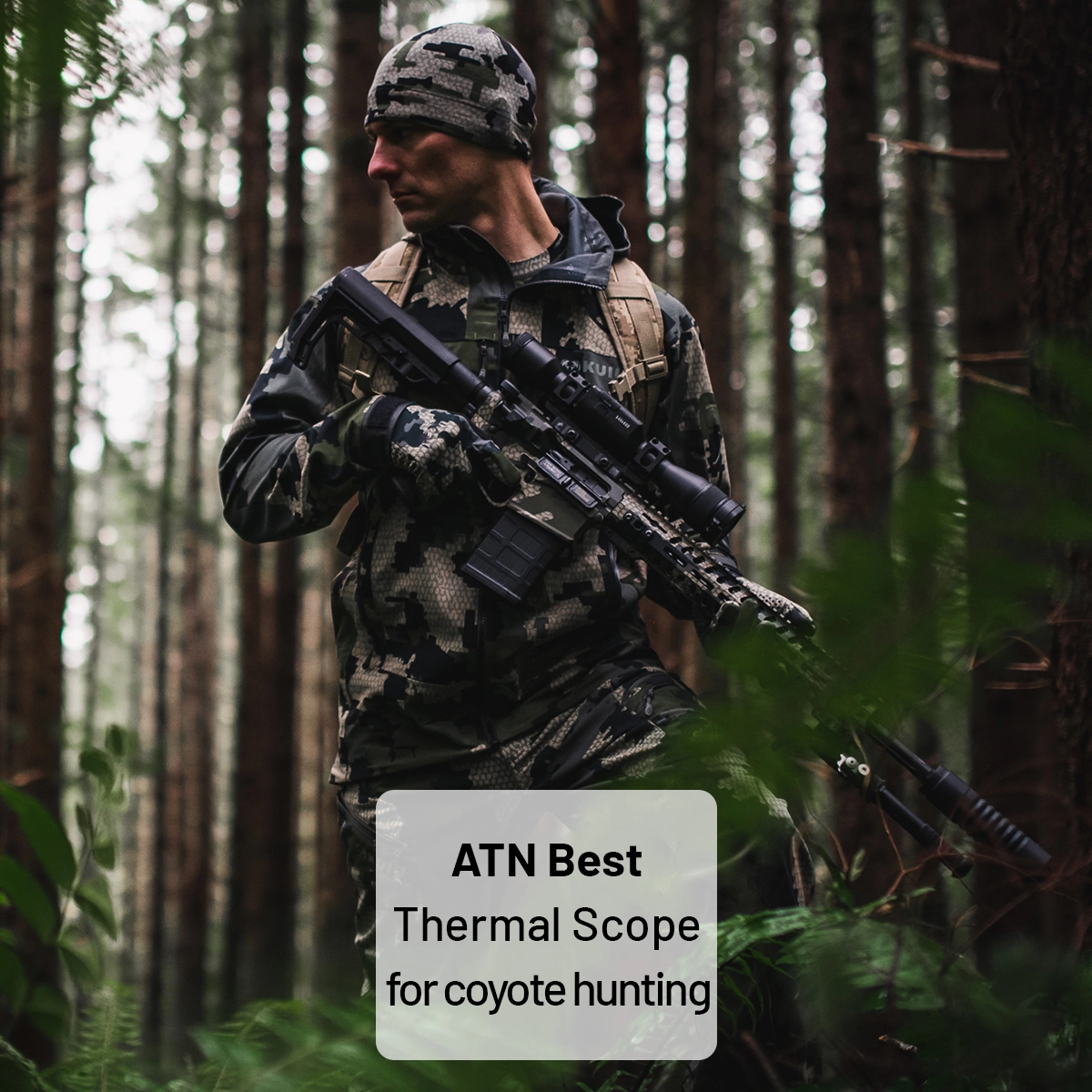
A thermal scope for AR15 coyote hunting is one of the most effective tools for night hunting. Unlike standard optical scopes or even night vision scopes, these devices detect heat radiation emitted from objects in the field of view. This allows the hunter to see animals in complete darkness, through fog, or even under adverse weather conditions, making them the perfect tool for coyote hunting.
But choosing the “best thermal rifle scope for coyote hunting” can be a complex task. The market is filled with various models, offering diverse features and in different price ranges. Some scopes offer high image quality, others have long battery life, while others might offer unique features like built-in rangefinders or video recording capabilities.
In this review, we will explore several models that we believe could be contenders for the best thermal scope for coyote hunting. We'll look into their main features, pros and cons, and point out what aspects to pay attention to when choosing a scope.
Be prepared to learn about the various technologies and capabilities available in modern gadgets. From magnification levels to refresh rates, from image quality to battery life – these are all important factors that influence how well a scope will perform for coyote hunting. Let's get started.
What is a Thermal Scope?
A thermal scope, also known as a thermal vision sight or a thermographic weapon sight, is a sophisticated piece of technology that operates fundamentally differently from traditional optical scopes or night vision scopes. These devices are built around the principle of detecting heat radiation or infrared energy. In essence, these scopes allow you to see an object's heat signature, giving you a clear picture regardless of the environmental conditions.
Every living and non-living object emits a certain level of thermal radiation. The intensity of this radiation is primarily dependent on the temperature of the object. A thermal scope uses this heat radiation to create a visible image, which is especially useful when visibility conditions are poor, such as in complete darkness, fog, smoke, or even heavy vegetation.
The science behind thermal scopes is truly fascinating. At the core of a thermal scope is an essential component known as a microbolometer. This is a type of sensor used for detecting and measuring changes in infrared radiation (heat energy). When the microbolometer detects differences in temperature, it transforms these differences into a detailed heat map. The heat map is then converted into an electronic signal, which is processed and displayed as an image on the scope's screen.
The image produced by a thermal scope usually shows hotter objects in lighter shades, and cooler objects in darker shades. However, the versatility of modern thermal devices allows you to switch between various color palettes for different visual representations of hot and cold. For instance, a common alternative is the "white hot" palette, where warmer objects appear white, and cooler objects appear black.
Another frequently used palette is the "black hot" one, which inverts the "white hot" palette and represents warmer objects in black. Other scopes may even offer more colorful palettes, such as "red hot," "rainbow," or "ironbow," each providing a unique visualization of thermal data.
Important Information! A thermal scope operates by detecting and visualizing heat energy, not light. This allows it to work effectively in complete darkness and adverse weather conditions.
One of the most significant advantages of thermal scopes is their ability to detect hidden or camouflaged targets. Because they perceive heat rather than light, these devices can reveal animals hiding in dense vegetation or behind other obstructions, providing hunters with a clear view of their quarry regardless of the environment.
This makes these devices an incredibly effective tool for hunting coyotes. Coyotes are known for their elusive nature and nocturnal behavior, which can make them challenging to spot with traditional or night vision scopes once the sun goes down. But with a thermal scope, the heat signature of a coyote can easily be detected against the cooler background, making it much easier to spot and target.
In addition to their functionality, modern thermal scopes also boast a variety of features that enhance their usability. These can include digital zoom capabilities, built-in recording and streaming functionalities, and even integrated ballistic calculators.
Choosing the best thermal scope for coyote hunting involves understanding how thermal imaging technology works, how different models and features can benefit your specific hunting needs, and how they compare to other night vision technologies. In the following sections, we'll delve deeper into this topic, discussing why thermal scopes are a good choice for coyote hunting, how they compare to night vision scopes, and what features to look for when choosing a thermal scope.
Thermal Imaging Technology: A Deep Dive
Thermal imaging, also known as infrared imaging, is a technology that allows for the visualization of temperature variances in objects. While our eyes discern light in the visible spectrum (approximately 400-700 nanometers), thermal cameras detect radiation in the infrared range (around 900-14,000 nanometers).
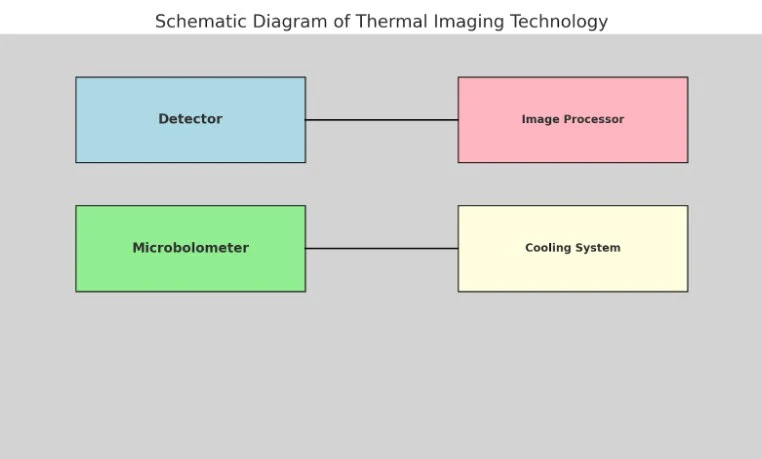
Black Body Radiation
Every object that has a temperature above absolute zero (-273.15°C or 0 Kelvin) emits radiation. The intensity and peak wavelength of this emitted radiation are governed by the object's temperature. This concept is fundamental to the science of thermal imaging. The peak wavelength of this radiation can be calculated using Wien's Displacement Law. The formula is given by:
λmax = b/T
Here, λmax is the peak wavelength, b is a constant known as Wien's displacement constant (with a value of approximately 2.897×10−3 m⋅K, and T is the absolute temperature of the object in Kelvin.
Infrared Detectors
The core of any thermal imaging system is its detector. This component is sensitive to infrared radiation, which is outside the range of human vision. Various materials, like Indium Antimonide (InSb) or Vanadium Oxide (VOx), are used to manufacture these detectors. They have a particular sensitivity to specific infrared wavelengths, usually falling between 3 to 5 micrometers and 8 to 14 micrometers. These ranges are often referred to as the mid-wave infrared (MWIR) and long-wave infrared (LWIR) bands, respectively.
Microbolometers
Microbolometers are a special type of detector prevalent in many commercial thermal cameras. They operate by responding to changes in temperature that are caused by absorbed infrared radiation. When infrared radiation strikes a microbolometer, it causes the material to heat up. This heating leads to a change in the resistance of the material. The variation in resistance can be precisely measured and then converted into an electrical signal. A notable specification of a standard microbolometer is its thermal resolution, which is typically around 0.05°C.
Image Processing
Raw data captured by the detector in a thermal camera isn't immediately usable as an image. This data requires significant processing to be interpretable. The captured infrared intensity values are first converted into temperature values. These temperature values are then translated into a grayscale or colored image, where each color or shade corresponds to a specific temperature range. Modern thermal cameras employ advanced algorithms to enhance these images further, providing users with clear, high-contrast visuals.
Cooling Systems
Detectors in some thermal imaging systems, especially those operating in the MWIR band, need to be cooled to function efficiently. Cooling these detectors to temperatures as low as 77 Kelvin using liquid nitrogen or other methods can significantly increase their sensitivity and reduce electronic noise. This cooling is crucial for applications that require precise temperature measurements or detection of subtle temperature differences.
Optics in Thermal Imaging
Optics play a vital role in thermal imaging. The lenses used in thermal cameras are crafted from materials transparent to infrared radiation, such as germanium. These lenses are responsible for focusing the incoming infrared radiation onto the detector. Depending on the specific application of the thermal camera, the field of view might vary. Some cameras offer a narrow field of view, like 7°, suitable for long-range detection. In contrast, others provide a much wider field of view, up to 180°, ideal for panoramic or wide-area surveillance.
Spectral Range and Atmospheric Windows
In the context of thermal imaging, the term "spectral range" often comes up. It refers to the specific range of wavelengths a camera or sensor can detect. The Earth's atmosphere is not uniformly transparent across all infrared wavelengths. There are specific 'windows' in the infrared spectrum where the atmosphere is particularly transparent, allowing for effective transmission of infrared radiation. Two primary windows leveraged by thermal imaging systems are the aforementioned MWIR and LWIR bands. These atmospheric windows ensure that environmental factors, like humidity, have minimal impact on the infrared signals detected by the camera.
Calibration and Compensation
Accuracy in thermal imaging is paramount, especially in applications like industrial inspections or medical diagnostics. For this reason, thermal cameras often undergo rigorous calibration processes to ensure that they provide accurate temperature readings. Additionally, advanced thermal cameras incorporate compensation algorithms to account for factors like ambient temperature, distance to the target, and atmospheric effects.
Applications Beyond Surveillance
While many associate thermal imaging with military or surveillance applications, the technology's utility extends far beyond these areas. In medicine, for instance, thermal cameras can detect inflammation or poor blood circulation. In construction and architecture, they help identify heat leaks in buildings, guiding energy efficiency improvements. The automotive industry is integrating thermal cameras into vehicles to enhance nighttime driving, identifying potential hazards beyond the reach of traditional headlights.
Challenges and Limitations
Like all technologies, thermal imaging has its limitations. For instance, thermal cameras can't "see" through glass, as glass is opaque to infrared radiation. This characteristic means that, contrary to popular belief, thermal imaging systems can't detect heat signatures through windows. Additionally, while thermal cameras can detect objects or people concealed by smoke or foliage, they might struggle in environments with minimal temperature contrasts.
Why Use a Thermal Scope for Coyote Hunting?
Coyote hunting presents a unique set of challenges that can make the use of conventional hunting equipment less effective. Coyotes are primarily nocturnal and are known for their elusive nature. They have an extraordinary ability to blend into their surroundings and can be quite challenging to spot, especially in low light conditions. This is where thermal scopes come into play. These advanced devices offer several significant advantages for coyote hunting, making them a preferred choice for many experienced hunters.
Here are some of the key reasons why these devices are advantageous for coyote hunting:
- Effective in Complete Darkness. As mentioned earlier, coyotes are primarily nocturnal creatures, meaning they are most active during the night. This nocturnal behavior can make them particularly challenging to hunt using traditional methods. Even with a full moon, it can be incredibly difficult to spot a coyote using a traditional optical scope. A thermal scope, however, operates differently. Instead of relying on light, these models detect heat signatures. This means they can easily pick up the heat emitted by a coyote's body, even in complete darkness, giving the hunter a clear and precise target.
- Unaffected by Weather Conditions. Weather conditions can often be unpredictable and may change rapidly, especially in the wild. Adverse conditions like fog, rain, or snow can often hinder visibility for hunters. Traditional optical scopes or night vision devices can struggle under these conditions. Infrared imagers, however, are unaffected by these conditions because they detect heat rather than light. This means that whether it's a foggy morning or a rainy evening, you can continue your hunt without worrying about visibility.
- Reveal Hidden Targets. Coyotes are known for their elusive nature. They are excellent at hiding and can often remain undetected in bushes or tall grass, making them difficult to spot with conventional scopes. However, a thermal scope can easily detect a coyote's heat signature, even if it's hiding behind vegetation. This ability to reveal hidden targets can give the hunter a significant advantage and can often mean the difference between a successful hunt and a missed opportunity.
- Long Detection Range. Another significant advantage of thermal scopes is their long detection range. Infrared imagers often have a longer detection range compared to traditional optical scopes or night vision scopes. This allows the hunter to spot and track coyotes from a safe distance, increasing the chances of a successful hunt and minimizing the risk of spooking the coyote.
- Non-Invasive. Unlike spotlighting or other illumination methods that can startle or spook coyotes, infrared imagers are completely non-invasive. They allow the hunter to observe and track coyotes without alerting them. This stealthy approach can be particularly beneficial when hunting coyotes, which are known to be easily spooked.
These advantages make thermal scopes a highly effective tool for coyote hunting. But the benefits don't just stop at these functional aspects. Using a thermal scope for coyote hunting can also significantly enhance the overall hunting experience. The high-tech nature of these scopes can add an element of excitement and novelty to the hunt.
Moreover, many modern thermographic sighting devices come with advanced features that further enhance their usability and functionality. These can include digital zoom capabilities for better target resolution at longer distances, built-in recording and streaming functionalities that allow you to capture and share your hunting experiences, and even integrated ballistic calculators that can help improve shot accuracy.
In essence, selecting the best thermal for coyote hunting involves taking into account these benefits and considering how they can enhance your specific hunting experience. Whether it's the ability to hunt in complete darkness, the capacity to spot hidden coyotes, the long detection range, the non-invasive nature, or the thrill of using advanced technology, a thermal scope can significantly improve your coyote hunting experience. In the next section, we will compare thermal scopes and night vision scopes to help you understand which one is better suited for coyote hunting.
Thermal Scope vs. Night Vision Scope for Coyote Hunting
When it comes to hunting coyotes, especially under low light conditions or at night, hunters are often faced with the decision of choosing between a thermal scope and a night vision scope. Both technologies offer unique advantages that can significantly enhance your hunting capabilities. However, they operate on different principles, offer different features, and are better suited to different conditions, which makes the choice between the two not as straightforward.
Night vision scopes work by amplifying the existing ambient light—such as moonlight or starlight—to create a visible image. They essentially collect the tiny amounts of light available, including the lower portion of the infrared light spectrum, and amplify it to the point that you can easily observe the scene.
Night vision scopes are particularly effective in conditions where there is some light available. They can also provide detailed images, allowing you to see the environment and the target with good clarity. However, their performance can be significantly affected in moonlight, or when the ambient light conditions change rapidly, such as if the moon gets covered by clouds.
On the other hand, infrared imagers operate on a different principle. Instead of relying on light, thermal scopes detect the heat signatures of objects. All living creatures emit heat in the form of infrared energy, and it is this energy that these devices pick up. This gives them the unique ability to detect targets in complete darkness, and in varying weather conditions, such as fog, rain, or snow.
These devices can also detect targets that are well camouflaged or are hiding behind vegetation, as the heat emitted by the target will contrast against the cooler background. However, heat vision optics often come at a higher price point compared to night vision scopes due to the advanced technology involved.
To further illustrate the differences, here's a more detailed comparison table:
| Feature | Thermal Scope | Night Vision Scope |
|---|---|---|
| Light Dependence | Can operate in complete darkness, unaffected by changes in ambient light | Requires use IR-illuminator |
| Weather Resistance | Unaffected by fog, rain, or smoke | Performance can be affected by fog or heavy rain |
| Detection Capability | Can detect hidden or camouflaged targets, unaffected by the target's surroundings | May struggle with camouflaged targets, can be affected by the target's surroundings |
| Range | Typically offers a longer detection range | May offer a shorter detection range compared to thermal scopes |
| Image Detail | Provides less detail of the target, focusing more on the heat signature | Provides detailed images of the target and surroundings |
| Price | Generally more expensive due to advanced technology | Generally less expensive, but offers fewer capabilities in challenging conditions |
Ultimately, the choice between a thermal or night vision scope for coyote hunting depends on various factors, including your specific hunting conditions, preferences, and budget. If you often hunt in complete darkness or adverse weather conditions, a thermal scope might be a better choice despite the higher price point. Its ability to detect heat signatures can make it easier for you to spot and track coyotes, even in challenging conditions.
On the other hand, if you typically hunt in conditions where there is some light available and budget is a concern, a night vision scope can be a viable option. It can provide you with detailed images, allowing you to observe the surroundings and the target with good clarity.
Features of Thermal Scopes
When choosing a thermal scope for coyote hunting, it's crucial to consider various features that can significantly impact the scope's performance, usability, and overall suitability for your specific hunting needs. Each feature plays a unique role in the functioning of the scope and understanding these features can help you make a more informed decision. Here are some key features to consider:
- Resolution. The resolution of a thermal scope is one of the most critical factors as it directly determines the image quality. The resolution refers to the number of distinct pixels in each dimension that can be displayed. In the context of thermal scopes, higher resolution means more pixels, and more pixels mean clearer and more detailed images. This becomes particularly important when identifying and tracking your target. With higher resolution, you can better distinguish the subtle details that might help you identify a coyote in the wild. It's worth noting that these gadgets with higher resolution tend to be more expensive, so you'll need to balance this feature against your budget.
- Magnification. The magnification level of a thermal scope is another important feature to consider. Depending on your hunting style, environment, and the typical distance to your target, you might prefer a scope with higher or lower magnification. A higher magnification allows for long-range shots, making it easier to spot and target coyotes from a distance. On the other hand, lower magnification is more suitable for closer, fast-moving targets, providing a wider field of view. Some scopes offer variable magnification, which can give you the flexibility to adjust as per the situation.
- Refresh Rate. The refresh rate of a scope refers to how often it updates the image. It is measured in Hertz (Hz), and higher refresh rates provide smoother and more real-time image updates. This is particularly helpful when tracking moving targets like coyotes. A scope with a high refresh rate can deliver a more fluid image when scanning the environment or tracking a moving target, enhancing your hunting experience.
- Battery Life. The battery life of the scope is another crucial aspect, especially for extended hunting sessions or multi-day hunting trips. The longer the battery life, the less you'll have to worry about your scope powering down at a critical moment. Some scopes come with rechargeable batteries, while others use standard batteries. Consider your typical hunting duration and the availability of power sources in your hunting area when looking at this feature.
- Durability. The scope should be durable and resistant to weather and rough handling. Hunting environments can be harsh, and your scope should be able to withstand these conditions. Many high-quality these gadgets are designed to be water-resistant, fog-proof, and shock-resistant, ensuring reliable performance in various hunting conditions.
- Additional Features. Many modern models come with additional features that, while not necessarily essential, can significantly enhance your hunting experience. These can include Wi-Fi connectivity for easy sharing of images or videos, video recording capabilities for capturing your hunting experiences, ballistic calculators for improved shot accuracy. Some scopes even offer smartphone apps that can provide a range of functionalities, including advanced image processing, weather data, and more.
When deciding on the best thermal scope for coyote hunting, it's important to consider how these features align with your hunting style and requirements. A high-resolution, high-magnification scope with a fast refresh rate might be the best thermal rifle scope for coyote hunting for one person. Still, another hunter might prioritize a robust, long battery life scope with video recording capabilities.
By understanding these features, you can make a more informed and confident decision when choosing a thermal scope. In the next section, we'll provide a detailed review of several top thermal scopes for coyote hunting, examining how they measure up in terms of these features, and how they could fit into your hunting setup.
Top Picks for Best Thermal Scopes for Coyote Hunting
In the realm of coyote hunting, having the right gear can significantly enhance your success and overall hunting experience. Among the essential pieces of hunting equipment is the thermal scope. As we've discussed earlier, a thermal scope allows you to detect the heat signature of your target, providing a clear image even in complete darkness or adverse weather conditions.
However, the market is filled with a myriad of models, each boasting different features, specifications, and price points. This can make the task of choosing the best thermal scope for coyote hunting quite daunting. To assist you in this process, we have compiled a list of top picks for the best thermal scopes for coyote hunting.
Each review will cover the key features, pros, and cons of each model. We'll start each section with a table summarizing the main specifications, followed by a more detailed review. In the end, we'll list the pros and cons and provide a brief summary.
Our goal is to provide you with a comprehensive understanding of what each model offers so that you can choose a thermal scope that best suits your hunting style, needs, and budget. Let's dive in.
ATN ThOR 4 Series
The ATN ThOR 4 Series represents the latest and most advanced offering from ATN's line of thermal scopes. These scopes leverage the power of a cutting-edge, dual-core thermal sensor, providing unsurpassed image quality and performance, making them an excellent choice for the demanding and ever-changing conditions of coyote hunting. Sensor resolutions for The ATN ThOR 4 Series:
- 384X288
- 640X480
The use of a dual-core thermal sensor ensures higher resolution, faster optics, and more efficient battery usage. This results in a sharper, more detailed image that allows hunters to spot and track their targets with incredible accuracy, even in complete darkness or challenging weather conditions.
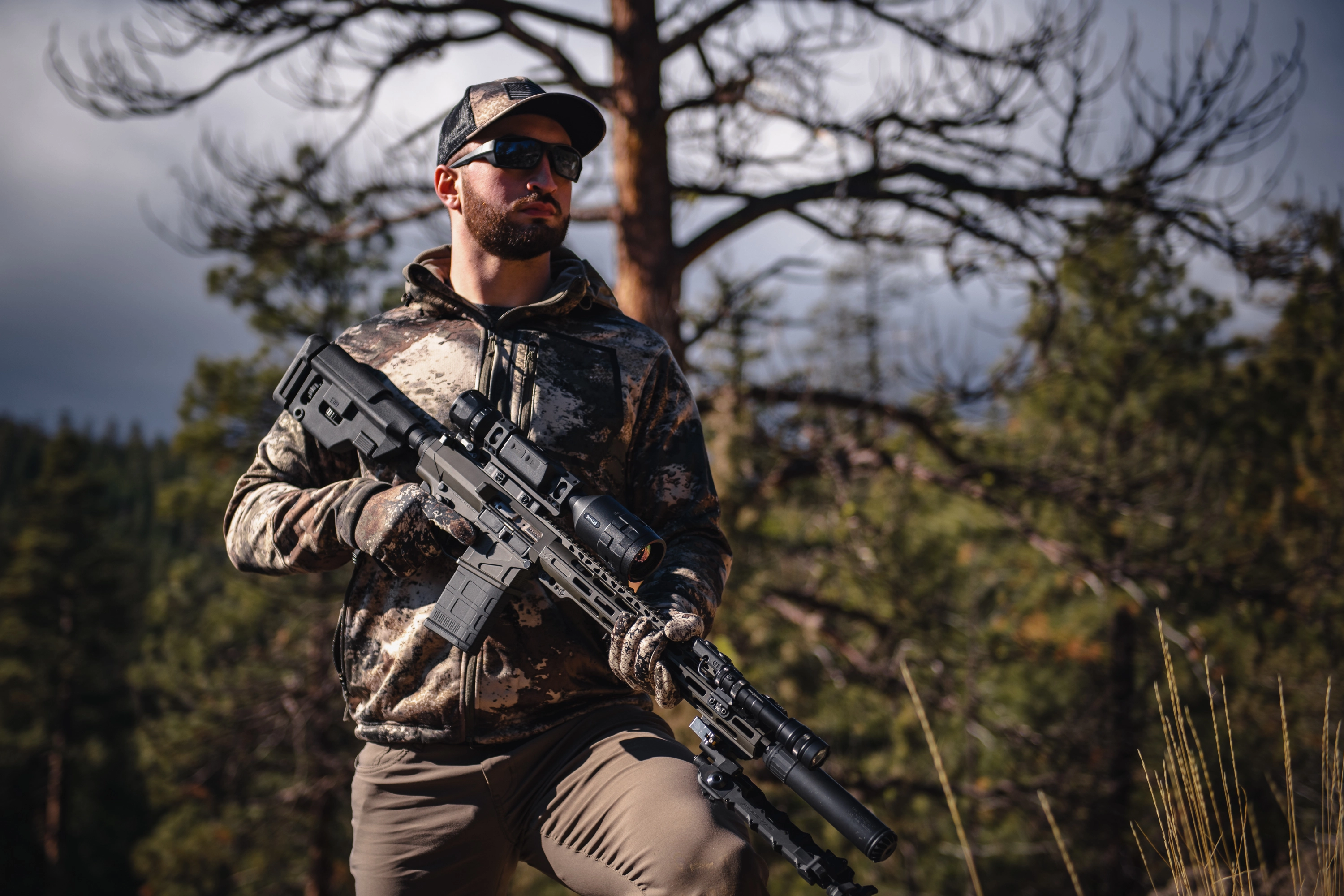
One of the standout features of the ThOR 4 Series is the Dual Stream Video capability. This allows hunters to stream high-definition video to their mobile devices in real-time while simultaneously recording onto an SD card. This feature enables hunters to capture their experiences without missing a moment of the action. Moreover, hunters can share their hunting trips live with friends or save the footage for later review and analysis.
The ThOR 4 Series also boasts an improved battery life, able to run for up to 18 hours on a single charge. This extended operation time is a significant advantage for prolonged hunting trips, ensuring the scope stays powered throughout.
The series also includes an advanced Ballistic Calculator. With this feature, scope can quickly calculate ballistics for long-range and angled shots, increasing their accuracy. The calculator takes into account multiple factors such as range, wind, angle, and temperature. When used in conjunction with the ABL rangefinder, the Ballistic Calculator can adjust your reticle's point of impact automatically.
Furthermore, the ThOR 4 Series includes a 3D gyroscope, an accelerometer, a magnetometer, and a smart electronic compass. These features contribute to a stable view, improved accuracy, and useful navigation aids.
Pros:
- High-resolution four-core thermal sensor for superior image quality.
- Dual Stream Video for live streaming and recording of hunting experiences.
- Enhanced battery life for extended operation.
- Advanced Ballistic Calculator for precise long-range shots.
- Comprehensive suite of smart features for increased accuracy and utility.
Cons:
- The multitude of features may be overwhelming for some users, and it may take time to fully master them.
- The premium price point, while reflective of its high quality and features, may not be within everyone's budget.
In summary, the ATN ThOR 4 Series is an exceptional line of thermal scopes that truly stands out in the market. Its dual-core thermal sensor, combined with a host of advanced smart features, ensures superior performance and accuracy, making it an excellent choice for coyote hunting. Although it comes with a premium price tag, the unparalleled image quality, extended battery life, and advanced functionalities make it a worthwhile investment for serious hunters seeking a high-performing, reliable, and feature-rich thermal scope.
ATN ThOR 5 Series
A product of ATN Corp – a leading tech optics company, the ThOR 5 Series encapsulates the perfect blend of sophistication, ruggedness, and precision, making it a significant game-changer in the hunting realm. The ThOR 5 series boasts an unprecedented thermal imaging quality, setting it apart from other scopes. With a high-resolution microbolometer sensor and a OLED display, these scopes offer superb image quality, ensuring hunters never miss a beat, even in the darkest nights.
Coyotes, known for their nocturnal nature, can be easily spotted with this incredible thermal imaging technology. Sensor resolutions for The ATN ThOR 5 Series:
- 320X240
- 640X480
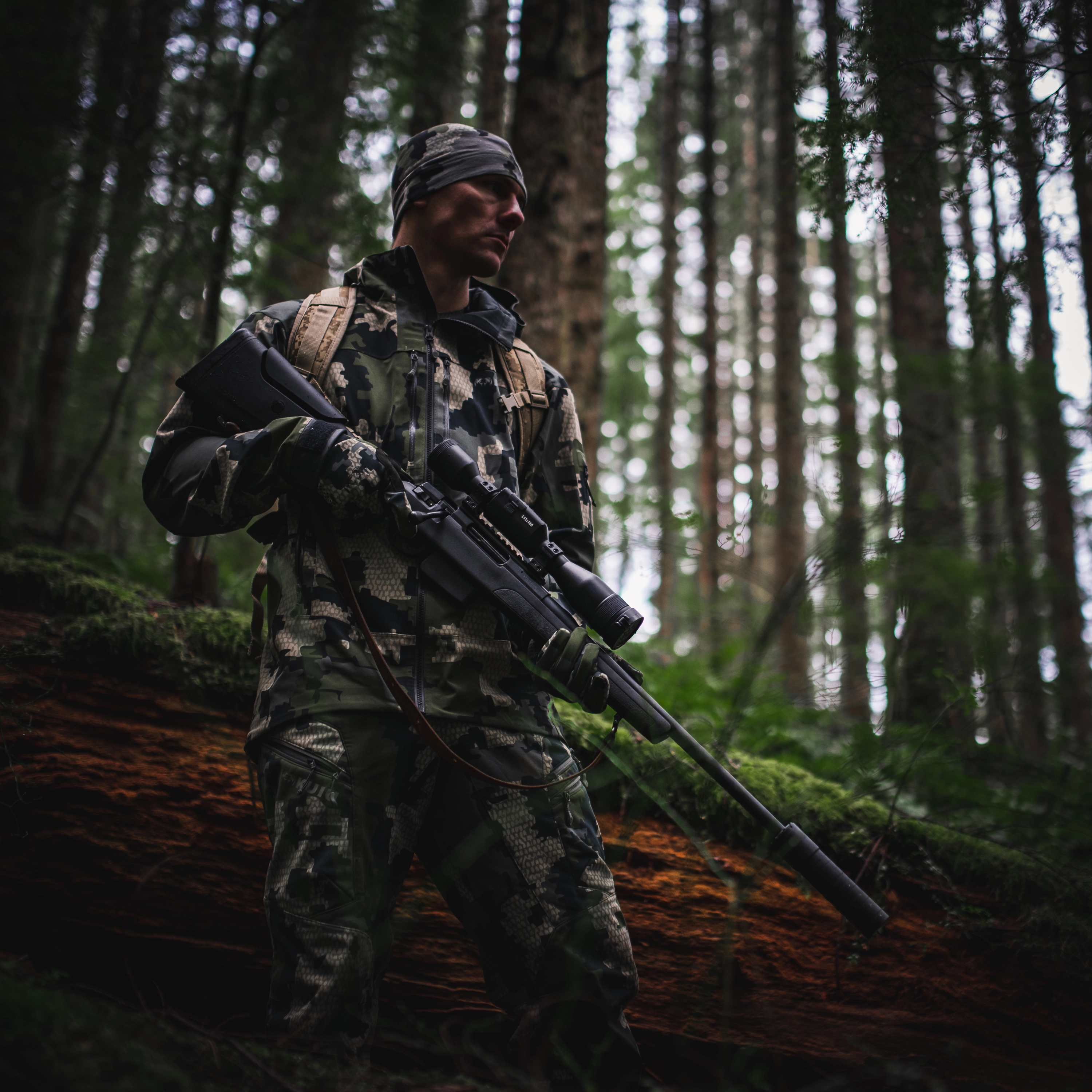
The ATN ThOR 5 series is equipped with an advanced ballistics calculator that sets the bar high for other scopes in the market. This feature enables scope to calculate the trajectory of their bullets, adjusting for range, wind, and other factors, thereby increasing their shot's accuracy. This is a valuable feature when hunting coyotes, which are known for their speed and agility.
With the ThOR 5 series, hunters no longer need to recount their thrilling hunting experiences. The scope offers dual-stream video recording, allowing users to record their hunting sessions in high definition. This feature allows hunters to relive their experiences and share their adventures with others.
The ThOR 5 series offers impressive battery life, ensuring that the hunting expedition is not cut short due to a drained battery. Its high-capacity battery delivers up to 10 hours of continuous operation, making it perfect for lengthy hunting sessions. In conclusion, the ATN ThOR 5 series is a top-tier thermal scope that provides unparalleled benefits to avid hunters. Its high-quality thermal imaging, advanced ballistics calculator, dual-stream video recording, smart rangefinder, and extended battery life are features that cater to the needs of every hunter, particularly those hunting coyotes. The ThOR 5 series, with its superior quality, functionality, compact and lightweight design undeniably offers a substantial return on investment for any serious hunter.
Pros:
- High-Quality Thermal Imaging. The ThOR 5 series provides unmatched thermal imaging quality that ensures clear visibility of targets even in complete darkness.
- Advanced Ballistics Calculator. This feature significantly enhances shooting accuracy by adjusting for various factors such as wind and range.
- Dual Stream Video Recording. The ability to record hunting sessions in high definition enables hunters to revisit and share their experiences.
- Extended Battery Life. With up to 10 hours of continuous operation, the ThOR 5 series ensures that hunting sessions are not interrupted due to a drained battery.
Cons:
- Cost. The ThOR 5 series, with its advanced features, comes at a premium price, which may be a barrier for some prospective users.
- Complexity. The array of advanced features may require a learning curve for users who are not familiar with such sophisticated equipment.
- Weight. Compared to some other scopes in the market, the ThOR 4 series is a bit heavier, which might be a downside for hunters who prefer lightweight equipment.
Remember, the decision to purchase a scope like the ATN ThOR 5 series will depend on individual needs, preferences, and budget. It's important to weigh the pros and cons to make an informed decision.
ATN ThOR 5 XD series
The ATN ThOR 5 XD series thermal scopes are the epitome of advanced hunting technology. As an offshoot of ATN Corp, a renowned tech optics company, the ThOR 5 XD series effortlessly merges high-tech features, robustness, and precision to provide a superior hunting experience. It is well-suited for hunting elusive animals such as coyotes.
The ThOR 5 XD series prides itself on its top-tier thermal imaging quality. With a high-resolution microbolometer the biggest sensor on the market and an impressive display, these scopes offer excellent image quality, which is vital for successful hunts, particularly in low-light conditions. The thermal imaging technology enables easy detection of coyotes and other targets, even in complete darkness. Sensor resolutions for The ATN ThOR 5 XD Series:
- 1280x1024
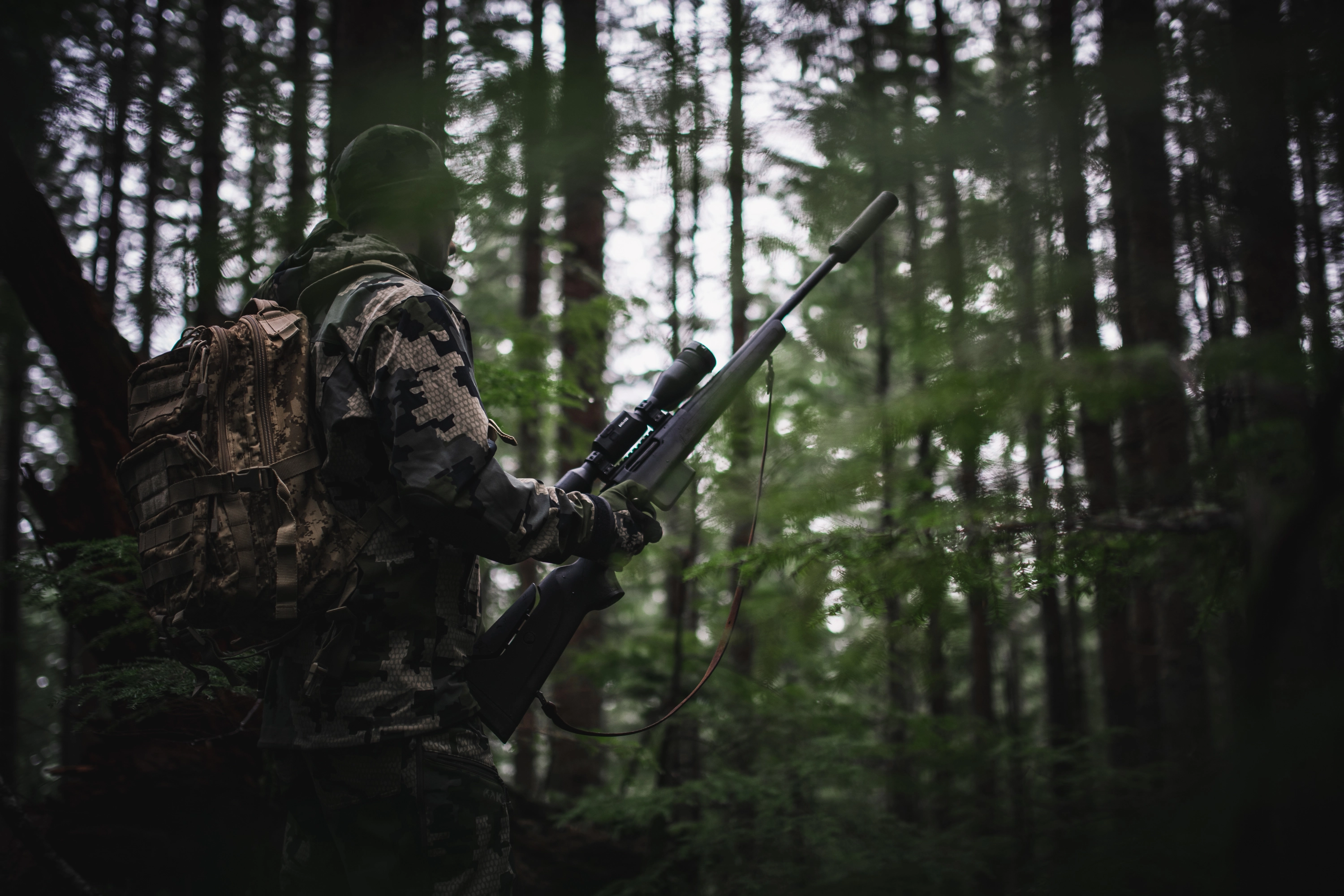
The ThOR 5 XD series comes with an advanced ballistics calculator, a feature that sets it apart from other scopes. This calculator aids hunters in determining their bullet's trajectory by considering range, wind, and other factors. This increases the likelihood of accurate shots, which is especially helpful when hunting fast and agile animals like coyotes.
The ThOR 5 XD series allows hunters to document their hunting experiences with its dual-stream video recording feature. This means users can record their hunting sessions in high definition, making it possible to relive the thrill and share their exploits with others.
The inclusion of a built-in LRF in conjunction with ballistic calculator in the ThOR 5 XD series showcases ATN's commitment to providing cutting-edge technology. This feature simplifies distance estimation, making it easier for hunters to hit their targets accurately. It quickly determines the distance to the prey, thereby facilitating a successful hunt.
With the ThOR 5 XD series, you don't have to worry about your hunting trip being cut short due to a drained battery. Its high-capacity battery provides up to 10 hours of continuous operation, making it ideal for extended hunting sessions.
Pros:
- The biggest thermal sensor provides clear and sharp imaging even in the most challenging conditions.
- Advanced Ballistics Calculator. Helps increase shooting accuracy.
- Dual Stream Video Recording. Allows the recording and reliving of hunting experiences.
- Built-in LRF. Simplifies the task of estimating the distance to targets.
- Extended Battery Life. Provides up to 10 hours of continuous operation, making it ideal for long hunting sessions.
Cons:
- Cost. The ThOR 5 XD series is a premium product and might be expensive for some users.
- Weight. The scope is relatively heavier than other models on the market.
- Complexity. The advanced features may require a learning curve for some users.
In summary, the ATN ThOR 5 XD series is a top-of-the-line thermal scope that offers unmatched benefits to seasoned hunters. With features such as high-quality thermal imaging, advanced ballistics calculator, dual-stream video recording and extended battery life, it meets the needs of every hunter, especially those hunting coyotes. The ThOR 5 XD series, with its excellent quality and functionality, offers great value for money for any serious hunter.
How to Choose a Thermal Scope
When choosing a thermal scope for coyote hunting, there are several factors to consider to ensure you select the model that best fits your needs. Here are some key points to keep in mind:
- Resolution. The resolution of a thermal scope determines the clarity and detail of the thermal image. A higher resolution will provide a more detailed image, making it easier to identify and track targets. Look for a thermal scope with a high resolution for the best image quality.
- Refresh Rate. The refresh rate of a thermal scope refers to how often the image is updated. A higher refresh rate will provide a smoother image, which is especially important when tracking moving targets like coyotes. A refresh rate of 30 Hz or higher is generally recommended.
- Magnification. The magnification range of a thermal scope determines how far you can see with it. If you plan on hunting in open areas where targets may be at a distance, a scope with a higher magnification would be beneficial. However, for closer range hunting in denser areas, a lower magnification may be more suitable.
- Battery Life. A thermal scope with a long battery life will ensure you don't run out of power during your hunting sessions. Look for a model with a battery life that can last for the duration of your typical hunting session.
- Durability. As with any piece of hunting gear, durability is a crucial factor to consider. The thermal scope should be able to withstand the rigors of hunting, including exposure to various weather conditions. Look for a scope that is water-resistant, shockproof, and designed to operate in a wide range of temperatures.
- Advanced Features. Many thermal scopes come with advanced features like built-in recording, Wi-Fi connectivity, ballistic calculators. While these features can enhance your hunting experience, they may also add to the complexity and cost of the scope. Consider which features are most important to you and look for a scope that offers those.
- Price. Finally, consider your budget. Thermal scopes can range significantly in price, with higher-end models offering more features and better performance. Determine what you are willing to spend and try to find the best scope that fits within your budget.
Remember, the best thermal scope for you depends on your specific needs and hunting style. By considering these factors, you can find a thermal scope that enhances your coyote hunting experience.
Conclusion
Choosing the right thermal scope for coyote hunting is a crucial decision that can significantly impact your success in the field. From image quality and refresh rate to magnification range, battery life, durability, and additional features, each factor contributes to the overall performance and usability of the scope.
Remember, the most expensive model or the one with the most features isn't necessarily the best one for you. The best thermal scope for your needs will depend on your specific hunting style, the conditions you typically hunt in, and your personal preferences.
One excellent option to consider is the ATN ThOR 5 thermal scope. This scope is renowned for its high performance, offering a perfect blend of technology and functionality. It has a reputation for delivering high-quality thermal images, even in the most challenging hunting conditions. Its features like adjustable magnification range, extended battery life, robust build, and intuitive user interface make it an excellent choice for hunting coyotes.
Remember, however, that the best thermal scope for you will depend on your specific hunting needs and preferences. Therefore, even though the ATN ThOR 5 is a superior scope, it's essential to assess if its features align with your hunting style and conditions.
Happy hunting!
